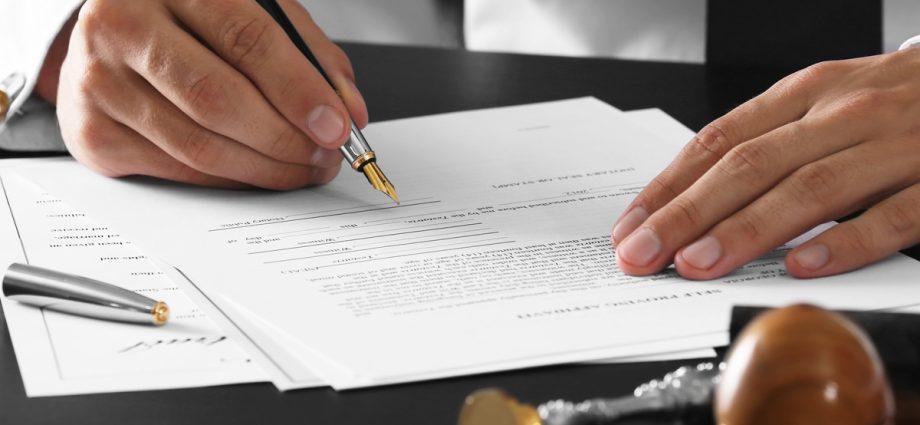Melao ea kajeno ea molao e ne e ke ke ea e-ba seo re se tsebang kajeno ntle le baemeli ba mosebetsi ona. Notary ke 'muelli oa molao ea tiisang litšebelisano, ho netefatsa botšepehi le bonnete ba litokomane le li-signature. A re ke re bue ka ho qaqileng haholoanyane ka histori le meetlo ea matsatsi a phomolo a litsebi.
Ha ho ketekwa
Letsatsi la Notaries le ketekoa selemo le selemo naheng ea Rona 26 April. Ka 2023, mashome a likete a bahabo rona ba tla e keteka.
histori ea matsatsi a phomolo
Ho hlaha ha mosebetsi oa notary ho bakoa ke nako ea Roma ea Boholo-holo. Ka nako eo, litumellano tsa molomo li ile tsa fetisetsoa pampiring ke litlelereke, ke bona ba nkoang e le mohlala oa li-notary tsa mehleng ea kajeno.
Leha ho le joalo, bangoli ba ne ba sa sebetsane le lipampiri tsa molao feela. Ka hona, mosebetsi oa li-tabellions o ile oa hlaha - batho bao mesebetsi ea bona e neng e amana feela le litokomane tsa molao, e leng liketso tsa molao le lipampiri tsa boahloli. Mesebetsi ea bona e ne e le tlas'a taolo e thata ea mmuso - mohlala, chelete ea moputso bakeng sa litšebeletso tse fanoeng e ne e khethoa ke 'musi, tabellion e ne e ke ke ea beha theko ea eona.
Lona lentsoe - "notariat", hammoho le ho thehoa ha lebitso le tšoanang, le lona le hlahile Roma, ka tlhahiso ea Kereke ea Roma. Ketsahalo ena e etsahetse qetellong ea lekholo la boXNUMX - qalong ea lekholo la boXNUMX la lilemo. Bangoli (ho tloha lentsoeng "notta" - "sign") ba ne ba sebeletsa li-dioceses 'me ba nka nako e khutšoanyane lipuisanong tsa babishopo le litho tsa kereke, hape ba sebetsana le tsamaiso ea litokomane tsa kereke. Ho ne ho sebeletsa litsebi tse joalo tse peli kapa tse tharo tempeleng e ’ngoe le e ’ngoe. Hamorao, mesebetsi ea notary e ile ea atolosetsoa sebakeng sa lefatše sa bophelo, 'me baemeli ba mosebetsi ona ba qala ho kopana eseng feela Roma, empa hape le Italy le ho pholletsa le Europe.
Naheng ea Rōna, ka lekhetlo la pele, ho boleloa analogue ea notary litokomaneng tsa lekholo la boXNUMX la lilemo tse fumanoeng nakong ea ho epolloa ha lintho sebakeng sa Novgorod. Baepolli ba lintho tsa khale ba fumane lengolo la birch-bark, leo ka mantsoe a kajeno le ka bitsoang notarization. Ho ea ka tokomane ena, mosali o tiisa chelete e nkiloeng ho motho e mong, ’me mongoli (eo re ka ’nang ra mo bitsa ka mokhoa o sireletsehileng hore ke moemeli oa pele historing ea Naha ea Rōna) o tiisa pampiri eo ka mosaeno oa hae.
Mosebetsi oa analogue ea notary naheng ea Rona o ile oa hlophiseha le ho ba bohareng lekholong la boXNUMX la lilemo. Lengolo la lekhotla le fumanoeng nakong ea ho epolloa ha Pskov le bua ka tlhokahalo ea ho hlahisa bopaki bo ngotsoeng nakong ea likhohlano tse amanang le thepa. E boetse e hlalosa litlhokahalo tsa ho etsa thato ea mofu. Tokomane ea thepa ea thepa ea Belozersky e hlophisitsoeng lekholong leo la lilemo e na le tlhahisoleseling mabapi le maemo a nepahetseng a ho sebetsana le thekiso le theko.
Ho fihlela lekholong la bo XNUMX la lilemo, notary joalo ka setheo se ikemetseng se ne se le sieo Naheng ea Rona. Mesebetsi ea litsebi tsena, joaloka Roma ea Boholo-holo, e ne e etsoa ke bangoli, ka linako tse ling ke baruti. Empa e se e le lekholong la boXNUMX la lilemo, notary e thehiloe e le setsi se ikemetseng. Bangoli ba molao ba ne ba sebetsa lekhotleng le leng le le leng la setereke, ho khethoa ha bona ho ne ho sebetsoa ke molula-setulo oa Lekhotla la Boahloli. Ka nako eo, mosebetsi oa li-notaries o ne o amana haholo le litokomane tsa thepa.
After the revolution, the situation changed dramatically. The abolition of private property changed the status of the notaries for a long time – it became completely state-owned. In the period from 1917 to 1922, notaries performed only the formal functions of certifying documents. However, gradually the number of actions increased greatly. This was enshrined in a resolution that was valid until the collapse of the USSR, where all the obligations of notaries were spelled out. In 1993, this institution again became private and independent of the state.
In 2016, the notaries celebrated 150 years of its existence. In honor of the important date, a Decree of the President of the Federation was issued on the creation of an official professional holiday. According to this document, a permanent date was assigned to the Notary Day – April 26th.
However, until 2016, experts celebrated this day, but unofficially. Only now they celebrated it on April 27th. The fact is that on April 14 (according to the old style), 1866, Emperor Alexander II signed the “Regulations on the notarial part”. It is from this year that the modern notary begins. When they chose the date for the unofficial holiday – April 27 – they did not take into account the peculiarities of the translation from the old style to the new one. But they took this into account when issuing the presidential decree and chose a historically accurate day – April 26th.
Meetlo ea matsatsi a phomolo
Joalo ka matsatsi a mangata a phomolo a ts'oanang, Letsatsi la Notary Naheng ea Rona le ketekoa haholo sechabeng sa litsebi. E le molao, likopano tse kholo le liboka li behiloe nako ea ho lumellana le letsatsi lena, moo basebetsi-'moho ba ke keng ba fapanyetsana tsebo le phihlelo feela, empa hape ba lebohana ka mokhoa o sa reroang.










